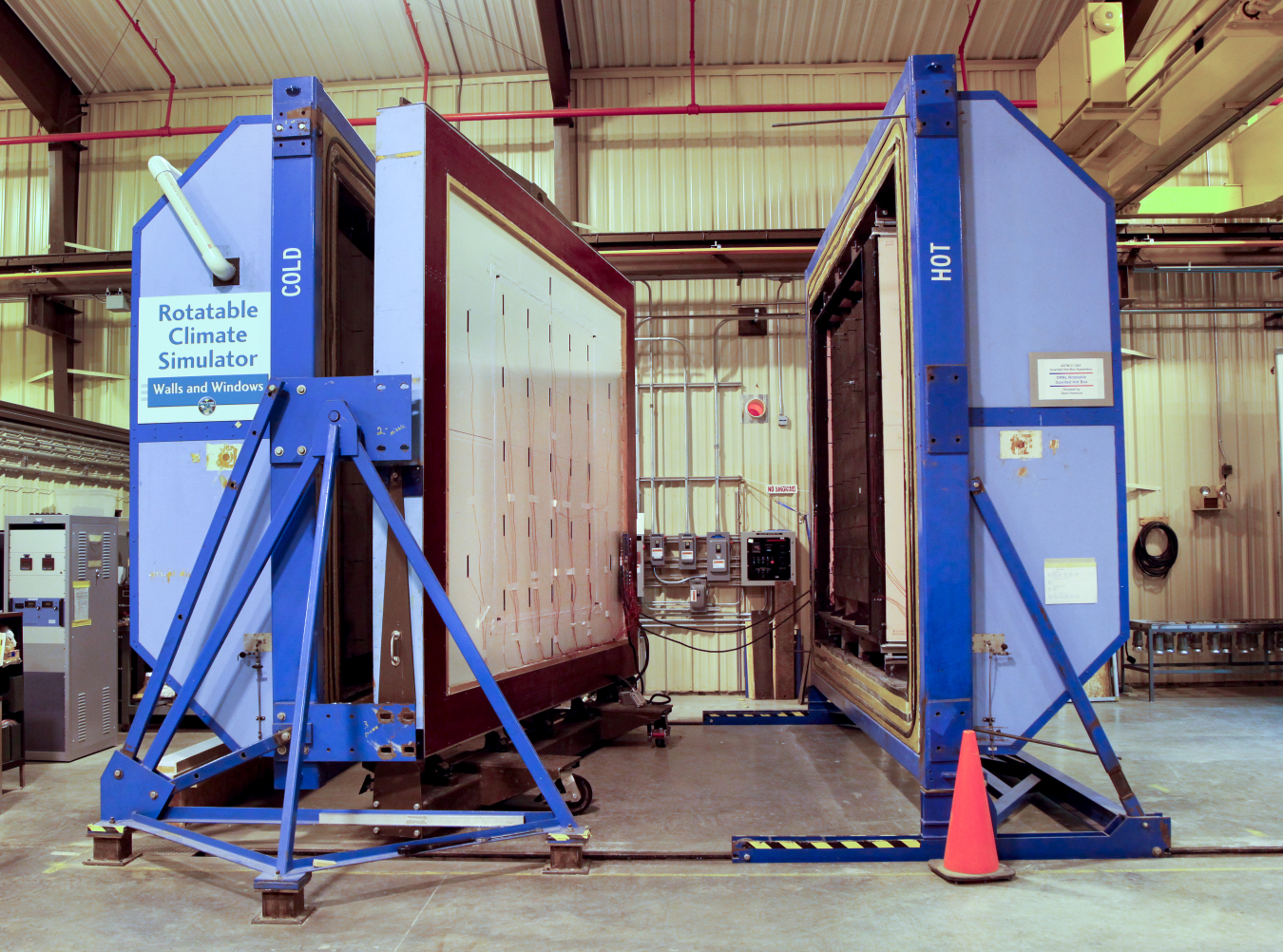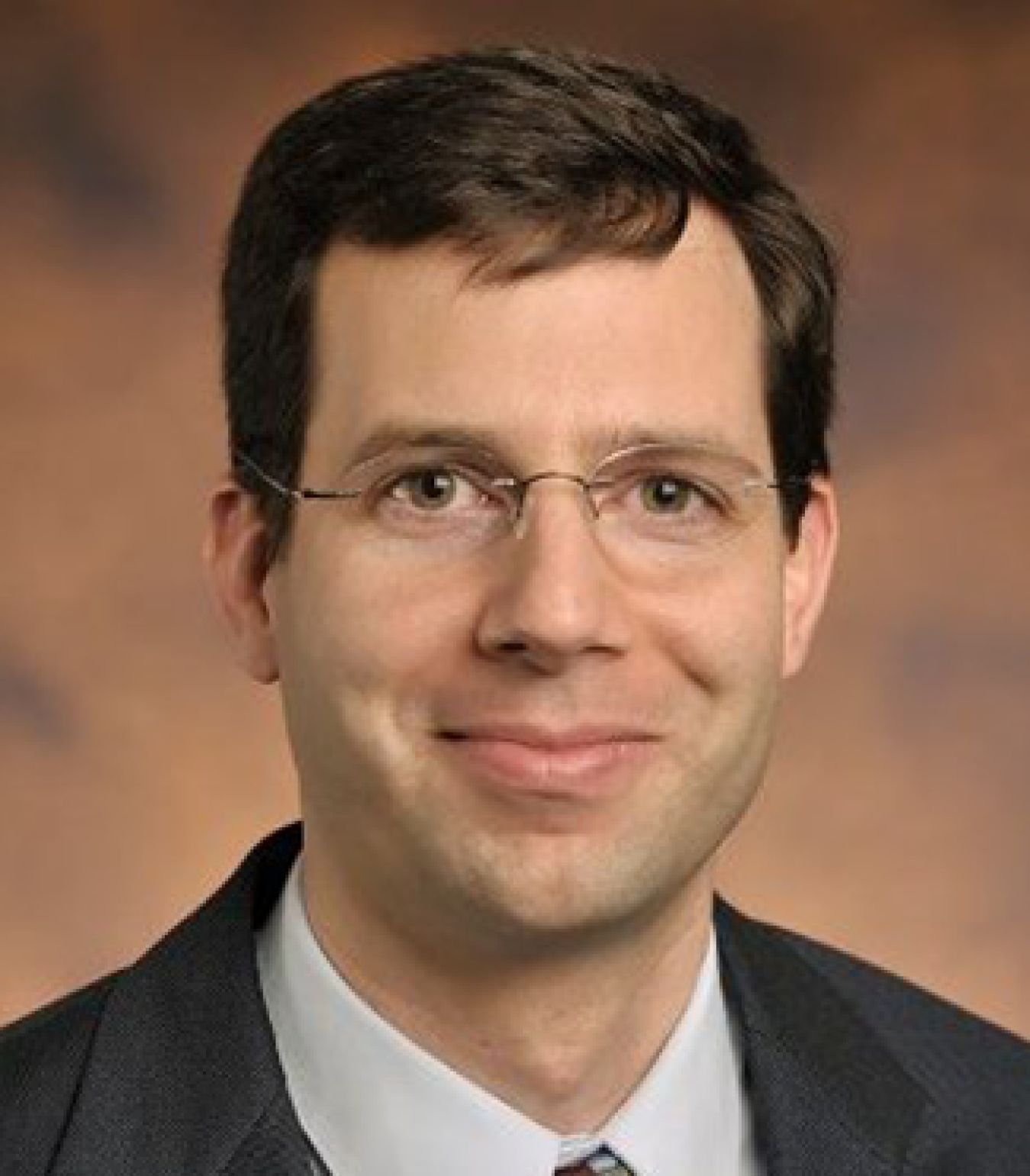A properly designed and constructed building envelope can greatly increase a building’s energy savings, comfort, and indoor air quality.
June 13, 2017
Thermal performance testing. Courtesy of Oak Ridge National Laboratory.
The building envelope comprises all of the elements of the outer shell separating the indoor from the outdoor environment. A properly designed and constructed building envelope can greatly increase a building’s energy savings, comfort, and indoor air quality. Innovations in the building envelope have historically been relatively slow-moving—no major improvements in thermal performance have been made to insulation materials since the 1970s—but the industry is now making some exciting new strides in the development of more efficient, high performance envelope materials and systems. The Energy Department’s Building Technologies Office (BTO) continues to drive advances in early-stage research and development (R&D) of next-generation residential and commercial building envelope technologies that can reduce uncontrolled air and moisture exchange, decrease thermal losses and gains, and improve occupant comfort.
BTO is pursuing R&D in multiple areas, including developing new materials, evaluating ultra-low thermal conductivity materials and characterizing a wide-range of building envelope applications. As part of one ongoing project, BTO is partnering with Lawrence Berkeley National Laboratory (LBNL) to develop a novel insulation using nanoscale phonon engineering—specifically optimizing surface energy, particle size, and acoustic property mismatch—to achieve or exceed an R-value of R-12 per inch at a significantly lower cost than existing state-of-the-art insulation technologies. The first iteration of this nanoparticle-based insulation material has been shown to be significantly more mechanically robust than aerogel insulation.
Another project, where BTO is partnering with Oak Ridge National Laboratory (ORNL) and Nanopore, has developed 2-inch thick polyisocyanurate board insulation with modified atmosphere insulation cores. The goal of this project is to reach an R-value of R-12 per inch, providing a low-cost alternative to vacuum insulation. Second-generation prototype boards have already reached between R-11.4 and R-11.9 per inch, demonstrating a higher thermal performance than existing commercially-available products.
Another early-stage research project—previously funded by BTO and hosted at ORNL—similarly focused on the development of new approaches for low-cost and highly-thermally-insulating materials. This project resulted in the development of a low-cost transparent thermal insulation material for fenestration systems, which was then licensed to a prominent industry partner, as well as the invention of several new ultralow thermal insulation materials. One of these inventions, 'Hybrid Hollow Silica Particles with Unprecedentedly Low Thermal Conductivity', recently won the prestigious National Innovation Award at TechConnect.
To qualify for TechConnect’s Innovation award, submitted innovations must have a clear U.S. federal funding history, and winners are chosen from the top 15% of applicants based on submitted technologies’ potential impacts on specific industry sectors. The winning hybrid hollow silica particles are a thermal insulation material with thermal insulation properties similar to, or even better than, state-of-the-art materials like aerogels, but with a much lower cost of production. In addition, the material can be used for thermal insulation in a variety of applications—including buildings, vehicles, hydrogen storage, heat exchangers, water supply pipework coatings, space shuttles, automobile engine coatings, airplanes, and waste heat energy conversion systems, just to name a few—expanding the impact of this innovation well beyond the buildings sector. Development of this material continues, with next stages focused on further lowering the thermal conductivity of the material and optimizing the manufacturing process for increased yields and throughput.
BTO recently held several workshops to solicit stakeholder input that will contribute to an update to the Windows and Building Envelope and R&D Roadmap. On March 2, 2017, BTO held the “Harnessing Advancements in Thermal and Mass Transport Sciences to Create Next Generation Building Envelope Technologies” workshop in Atlanta, Georgia, where leading thermal scientists and building application experts came together to identify research directions that could lead to next-generation building envelope innovations. Between May 31 and June 1, BTO held the “Windows & Envelope R&D Opportunities” Workshop in Chicago, Illinois to identify high-risk scientific challenges and material development opportunities, as well as goals and actions to achieve technological progress that will reduce energy consumption in the buildings sector.
Sven Mumme

Sven Mumme is technology manager in the Building Technologies Office (BTO) at the U.S. Department of Energy (DOE) for Opaque Envelope and Thermal Energy Storage R&D. In addition, Sven plays an integral role in the Advanced Building Construction (ABC) Initiative and the Small Business Innovation Research (SBIR) program, and contributes to BTO’s Technology-to-Market Initiative.
Sven originally joined DOE in 2012 as an ARPA-E technology-to-market advisor, where he helped transition breakthrough energy technologies from lab to market. He was responsible for leading the commercialization strategy for the Methane Opportunities for Vehicular Energy program and a variety of building energy efficiency, energy storage, and gas-to-liquids projects from the OPEN 2012 and OPEN 2015 programs. Prior to joining DOE, Sven worked for the specialty chemicals and materials company W.R. Grace from 2006 to 2012. In his most recent role as a global marketing manager for incubator technologies, part of Grace's New Business Development department, he developed high-risk/high-reward businesses in energy storage, alternative feedstock conversion, and drug delivery, and he also led the new product development stage-gate process to advance step-out technologies to market. From 1999 to 2005, Sven was a project engineer at Underwriters Laboratories (UL), where he designed laboratory systems and equipment for UL's test facilities across Asia, Europe, and North America.
Sven earned a B.S. in mechanical engineering from Queen's University in Kingston, Ontario, and an MBA from Duke University’s Fuqua School of Business.

